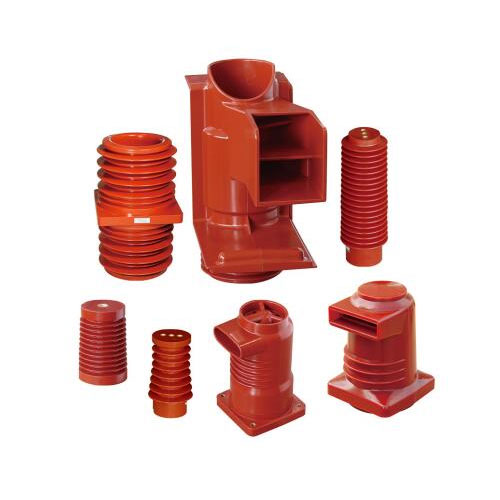High Voltage Insulators: Critical Components for Electrical Safety and Reliability
2025-07-11
High voltage insulators are essential components used in electrical power systems to support and separate electrical conductors without allowing current to pass through the insulator itself. They ensure safety and reliability in high voltage transmission and distribution networks.
What are High Voltage Insulators?
High voltage insulators are devices made from materials such as porcelain, glass, or polymer composites designed to withstand electrical stress and environmental conditions. They prevent unintended flow of electricity to the ground or between conductors, protecting equipment and personnel.

Types of High Voltage Insulators
Pin Type Insulators
Mounted on a pin fixed to crossarms.
Common in transmission and distribution lines up to medium voltages.
Suspension Insulators
Consist of a series of disc-shaped units linked together.
Used for very high voltages, supporting heavy conductors on towers.
Strain Insulators
Used where conductors are under mechanical tension, such as dead-end towers or corners.
Can be similar to suspension insulators but designed to handle tension.
Post Insulators
Provide support for busbars and equipment in substations.
Designed for vertical or horizontal mounting.
Shackle Insulators
Used for low voltage overhead lines, often in distribution systems.
Provide mechanical support and electrical insulation.
Materials Used
Porcelain: Traditional, high mechanical strength and excellent electrical insulation.
Glass: Good electrical properties and visibility of damage (due to transparency).
Polymer/Composite: Lightweight, resistant to vandalism and pollution, and easier to handle.
Key Features of High Voltage Insulators
High Dielectric Strength: Withstand high voltage without breakdown.
Mechanical Strength: Support heavy conductor loads and environmental stresses.
Weather Resistance: Resist rain, pollution, UV radiation, and temperature variations.
Creepage Distance: Design ensures sufficient surface distance to prevent flashovers.
Benefits of Using High Voltage Insulators
Enhanced Electrical Safety: Prevents leakage currents and short circuits.
Reliability: Maintains consistent performance under harsh conditions.
Longevity: Durable materials and construction extend service life.
Reduced Maintenance: Especially polymer insulators require less upkeep.
Applications
High voltage power transmission lines.
Electrical substations and switchyards.
Distribution networks in urban and rural areas.
Renewable energy installations like wind and solar farms.
Maintenance Tips
Regular inspection for cracks, chips, and contamination.
Cleaning to remove dust, salt, and pollution buildup.
Monitoring for signs of electrical discharge or damage.
Replacement of damaged or degraded insulators promptly.
Conclusion
High voltage insulators are vital for the safe and efficient operation of electrical power systems. Their robust design and materials ensure electrical isolation, mechanical support, and long-term reliability in demanding environments.


